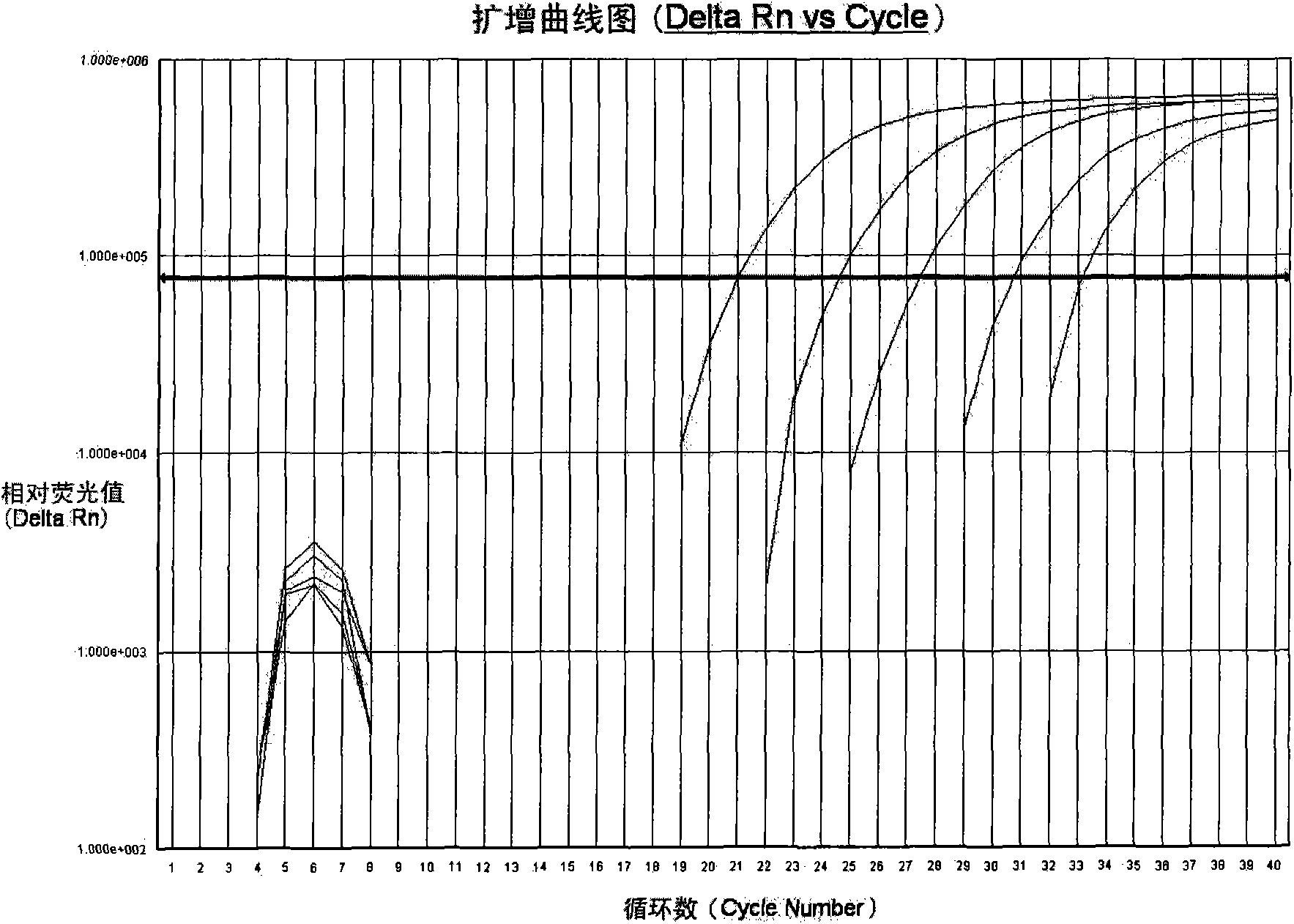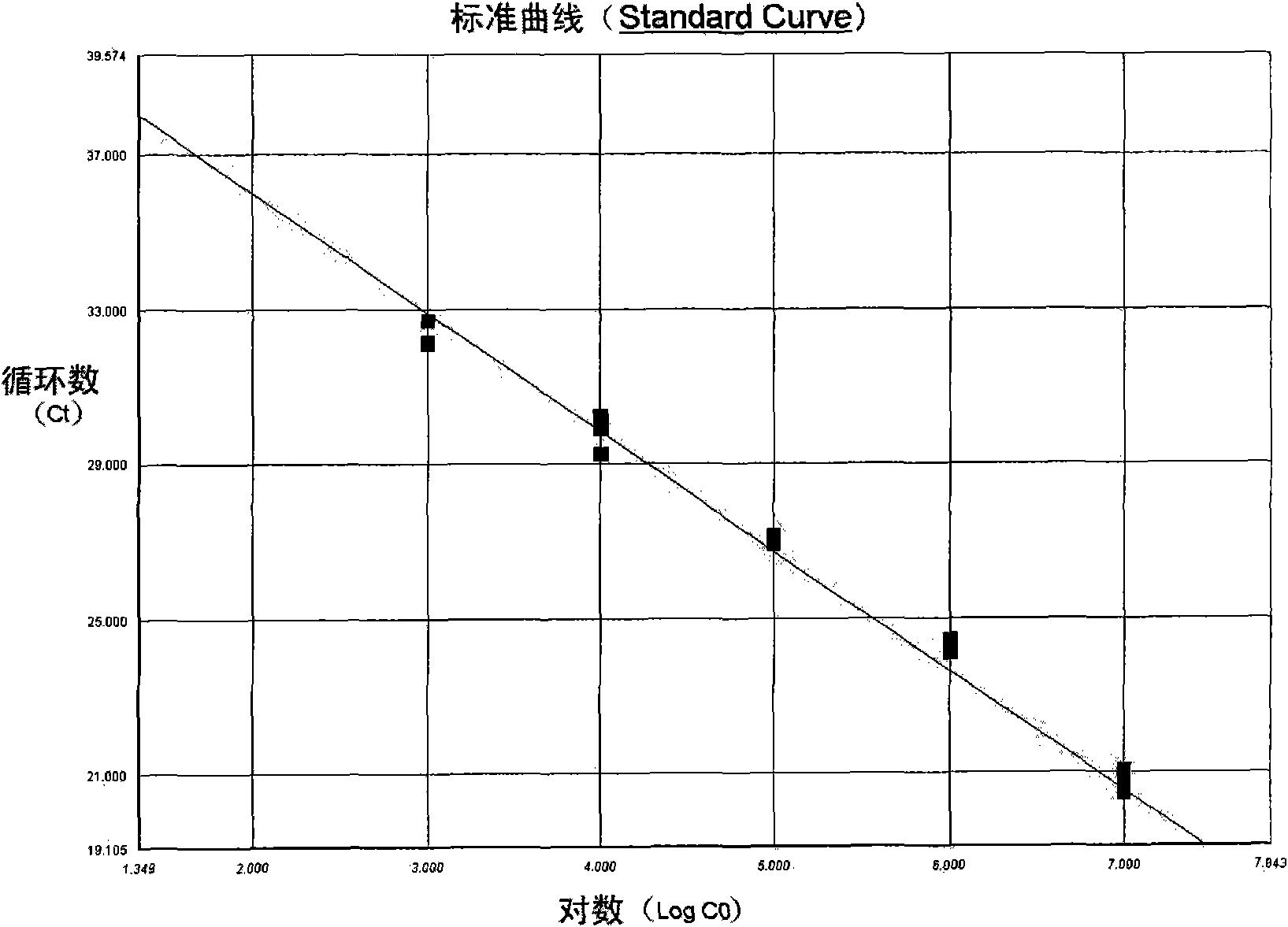Fluorescent PCR (Polymerase Chain Reaction) kit for quantitively detecting HPV16/18 type infection
A quantitative detection and kit technology, applied in the determination/inspection of microorganisms, microorganism-based methods, microorganisms, etc., to achieve the effect of accurate quantification, simple steps, and reducing the risk of PCR product contamination
- Summary
- Abstract
- Description
- Claims
- Application Information
AI Technical Summary
Problems solved by technology
Method used
Image
Examples
Embodiment 1
[0043] Embodiment 1: the preparation of kit
[0044] 1. Primer and probe design and synthesis
[0045] Use Primer Express 2.0 to target the L1 regions of HPV16 and HPV18 types (research shows that there are certain homologous sequences and polymorphic sequences between the L1 region sequences of HPV genomes, and the sequence differences are the basis for the division of different HPV types ), screen the probes in the conserved region, and design 16 and 18 upstream and downstream primers on the basis of the selected probes. Both primers and probes were synthesized by a professional company. The primers were purified by PAGE, and the probes were purified by HPLC. The 5' end of the probe was labeled with a FAM fluorescent group, and the 3' end was labeled with a TAMRA fluorescent group.
[0046] The amplified sequence is shown in Table 1:
[0047] Table 1. Specific probe and primer sequences
[0048] sequence name
[0049] 2. Preparation of HPV plasmid positive templ...
Embodiment 2
[0059] Embodiment 2: the use of kit
[0060] 1. Sample extraction
[0061] Use the DNA extraction solution to extract the HPV virus nucleic acid in the sample to be tested
[0062] 1) Sample pretreatment: wipe off excess secretions from the cervix, use a cotton swab soaked in normal saline to cling to the cervical mucous membrane and rotate it for 2 weeks to obtain secretions and exfoliated cells, and put the cotton swab after sampling Rinse fully in an EP tube with 1ml of sterile saline, and squeeze dry by sticking to the wall. Alkaline lysis method to extract HPV virus.
[0063] Lysis solution formula: 60mmol / L TrisHCl, pH 8.0; 0.5% SDS; 200mmol / L NaCl
[0064] 2) Operation steps: Take 500 μl of secretion and mix it, centrifuge at 13000 rpm for 10 minutes, discard the supernatant; add 50 μl of lysate, incubate at 100°C for 20 minutes, centrifuge at 13000 rpm for 1 minute, take 2 μl of supernatant for PCR reaction.
[0065] 2. Quantitative reference preparation
[0066] ...
PUM
 Login to View More
Login to View More Abstract
Description
Claims
Application Information
 Login to View More
Login to View More - R&D
- Intellectual Property
- Life Sciences
- Materials
- Tech Scout
- Unparalleled Data Quality
- Higher Quality Content
- 60% Fewer Hallucinations
Browse by: Latest US Patents, China's latest patents, Technical Efficacy Thesaurus, Application Domain, Technology Topic, Popular Technical Reports.
© 2025 PatSnap. All rights reserved.Legal|Privacy policy|Modern Slavery Act Transparency Statement|Sitemap|About US| Contact US: help@patsnap.com



